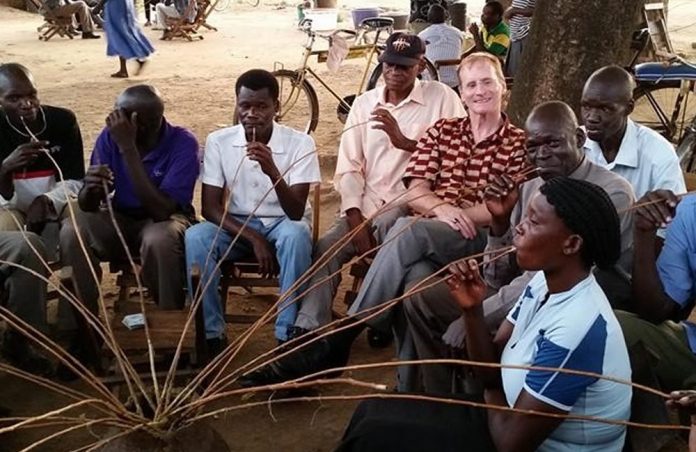Time check: 8:00 PM. Location: Nsambya. You dear folks can call this, time for Malwa aka Ajono. Or what you fancy people will call a millet, maize, or sorghum brew, it sits okay. A group of men leisurely amble into a reed enclosure that is slightly thrown out of the barracks. Inside the enclosure sits a group of about 18 men and women around a pot of frothy local brew, commonly referred to as Malwa.
One of the men, a chap whose potbelly was slapped with hyperbole, seems to run things here. When I enter, he is saying something about a Sacco the group should start.
He speaks with authority because he is the chairman for the week. A chairman voted to orchestrate the activity that ensues at the joint every week. But still, he looks special. His words seem more calculated than most of the questions he is receiving. The way he carries himself exudes elegance. It says he is studied. And before he mentions that he works for a big corporate company, your imagination has already put that question out of the way for you.
Yet, tonight, none of those things matter. He is having his finest drink. Heck, as he caresses his lengthy straw, occasionally thrusting it in and out the Malwa pot to mix up the concoction of hot water and other ingredients of the fermented millet, one question seems to linger in his head; “Can life get any better than this?”
Back in his village in Gogonya, his gramps is seated with village elders around a bigger version of the Malwa pot, Ndombolo Ya Solo, the Lingala classic is blaring from the stereo. Hot water is brewing from a nearby fireplace as his gramps waxes lyrical about his success in the city.
He is among a group of men who choose to remain true to their cultures. A breed that maintains a deaf ear to the noisy train of civilization and the trivialities that drive the cyber era. The districts of Soroti, Kumi, Kaberamaido, and Katakwi which make up the Teso region are believed to be the only ones where the local brew referred to indigenously as Ajon, is celebrated. But they are not. The districts surrounding it like Mbale, Pallisa, Budaka, Bududa, et al, according to Okiring Jameson, a teacher in Soroti, are also ardent consumers of the beverage.
Yet because all those districts have relatives who chase dreams in the dusty city that Kampala is, the nostalgia kicks and as such, many are minting off it.
The Joints in Kampala
Kampala is littered with many Malwa joints. So much that a lucky lot of entrepreneurs have registered their success through selling the local brew to the very demanding market.
The most famous area for Malwa joints in Kampala is Nsambya. According to a regular at one of the joints there, the place above the Nsambya barracks on Ggaba road has withered the storms of the investor-scheme-money-induced evacuations, certainly because the people that make those decisions deem the place special and regardless of the meals it might put on their tables, they are skeptical about evacuating tones of good memories fwaaa.
Kitintale is also famed for hosting a number of corporates in their Malwa joints. A place called Kataza in Kitintale, however, stands out. Certainly, because according to Jackie Nandudu, a local and constant customer to one of the joints, it is the one place where people have garnered fortunes over brewing the beverage.
Brewing process
According to Sam Ogunum, a seasoned brewer of the Malwa beverage on Limoto Village, Pallisa, the preparation of Malwa for the Itesots is not the same way other regions of the country prepare it. “We, the Itesots use a combination of millet and sorghum, while the Langi use a similar formula that they are yet to muster, while the people in the west use strictly millet’” relays Sam Okuda.
“Millet kernels are soaked in warm water until they sprout, with the goal to increase the content of maltose in the grain. The millet is then dried out to arrest the germination process. The malted grain is then pulverized and mixed with water. This mixture is commonly known as wort. The wort is later boiled in order to remove any potential bacterial threat. Once the boiling process is complete and the wort cools down yeast is added. The mixture is then allowed to ferment. The entire process takes five days,” adds Sam.
There is, however, a mushrooming habit that the urban Malwa joints are adding to the formulae. According to Joyce Akidi, a brewer at a Malwa joint in Nsambya, other intoxicants are added to meet the expectations of the urban breed of consumers. “Some urge us to add vodka to enhance the alcohol levels in the beverage. While some want so badly for their friends to get intoxicated so they insist that we add weed. Some Malwa joints do it on purpose, while others do it on request,” relayed Akidi.










